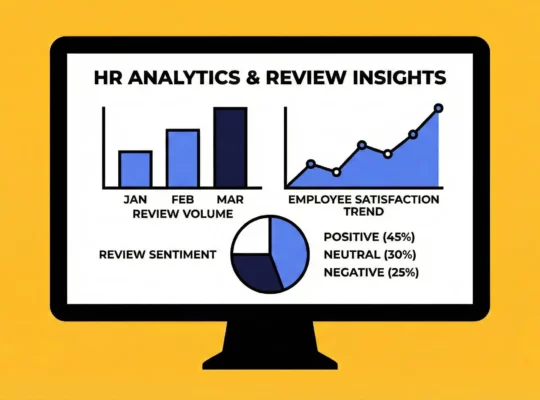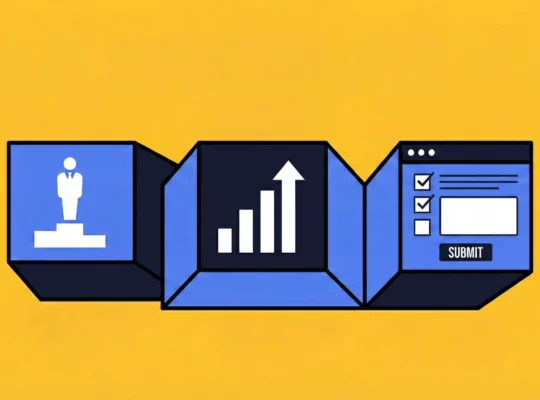In growing businesses, having a solid tactical HR foundation can mean the difference between thriving or faltering. Tactical HR encompasses a wide range of activities that directly support the organization’s goals and objectives. Essentially, tactical HR is the “doer” that puts the strategic plans of the HR department into action.
Table of Contents
What Is Tactical HR?
Tactical HR, also known as operational HR, refers to the day-to-day management of human resources functions within an organization. It encompasses a wide range of activities that are essential for keeping the business running smoothly, including:
- Payroll management
- Employee relations
- Compliance with labor laws
- Recruitment and onboarding
- Administrative tasks
Tactical vs. Strategic HR: Understanding the Difference
Tactical HR and strategic HR are often thought of as two distinct functions, but in reality, they complement each other. While tactical HR focuses on the day-to-day operations that keep the company running, strategic HR is geared toward long-term goals like talent management, workforce planning, and succession strategies.
For example, when hiring new employees, tactical HR ensures that job descriptions are crafted correctly, the applicant tracking system (ATS) is updated, and compliance is maintained throughout the hiring process. Strategic HR, on the other hand, focuses on how this hiring fits into the company’s long-term talent goals, ensuring that the right skills are brought into the organization for future growth.
Here’s a more detailed comparison of the two functions:
| Function | Tactical HR | Strategic HR |
| Focus | Day-to-day operations | Long-term goals and direction |
| Activities | Payroll, benefits, employee relations | Succession planning, talent management, workforce planning |
| Role | Execution | Strategy and planning |
| Timeframe | Short-term | Long-term |
| Relationship | Complementary | Interdependent |
Key Components of Tactical HR
Tactical HR is essential for the day-to-day operations of any organization. Here are some of the key components:
1. Hiring and Onboarding
- Crafting Job Descriptions: Creating accurate and engaging job descriptions to attract qualified candidates.
- Sourcing Candidates: Utilizing various channels to find suitable candidates, such as job boards, referrals, and social media.
- Screening and Selection: Reviewing resumes, conducting interviews, and selecting the best candidates for the role.
- Onboarding: Developing and implementing an effective onboarding process to welcome new hires and ensure a smooth transition.
2. Payroll and Benefits Management
- Payroll Processing: Ensuring timely and accurate payroll calculations, including taxes, deductions, and bonuses.
- Benefits Administration: Managing employee benefits programs, such as health insurance, retirement plans, and time off.
- Compliance: Ensuring compliance with all relevant labor laws and regulations.
3. Compliance and Risk Management
- Labor Law Compliance: Staying up-to-date with local, national, and international labor laws.
- Risk Assessment: Identifying and mitigating potential risks, such as workplace accidents, discrimination, and harassment.
- Investigations: Conducting investigations into employee complaints or misconduct allegations.
4. Employee Relations
- Grievance Handling: Addressing employee grievances and complaints in a timely and fair manner.
- Conflict Resolution: Facilitating conflict resolution between employees or departments through employee review collection and, most importantly, the employer’s prompt response.
- Employee Engagement: Fostering a positive and supportive work environment to improve employee morale and satisfaction.
The Critical Role of Tactical HR in Organizational Success
Company leaders and executives rely on tactical HR to ensure the smooth and efficient operation of their businesses. By managing day-to-day HR tasks, tactical HR supports broader organizational objectives, including:
1. Employee Satisfaction and Retention
- Positive Work Environment: Effective tactical HR practices contribute to a positive and supportive work environment, which can boost employee morale and satisfaction.
- Reduced Turnover: By addressing employee concerns and providing timely support, tactical HR can help reduce turnover rates and retain top talent.
2. Operational Efficiency
- Streamlined Processes: Well-managed tactical HR functions can help streamline processes, reduce administrative burdens, and improve overall efficiency.
- Time Savings: By automating tasks and ensuring compliance, tactical HR can free up time for leaders to focus on strategic initiatives.
3. Cost Savings
- Reduced Errors: Accurate payroll processing and compliance management can help minimize errors and avoid costly penalties.
- Improved Efficiency: Streamlined HR processes can lead to cost savings by reducing administrative overhead and improving productivity.
4. Risk Management
- Legal Compliance: Tactical HR ensures that the organization is compliant with all relevant labor laws and regulations, reducing the risk of legal issues and penalties.
- Risk Mitigation: By addressing employee concerns and proactively managing potential risks, tactical HR can help prevent costly disputes and disruptions.
Common Pitfalls in Tactical HR and How to Avoid Them
Even the most experienced HR teams can make mistakes. Here are some common pitfalls to watch out for and strategies to avoid them:
1. Poor Job Descriptions
- Clarity is Key: Ensure job descriptions are clear, concise, and accurately reflect the actual requirements of the role.
- Avoid Over- or Underselling: Don’t oversell or undersell the position, as this can lead to mismatched expectations.
- Seek Input: Involve hiring managers and subject matter experts in the job description creation process to ensure accuracy.
2. Rushed Hiring
- Quality Over Quantity: Prioritize quality over quantity in the hiring process. Take the time to thoroughly screen and assess candidates.
- Avoid Hiring Gaps: Plan ahead to avoid urgent hiring needs that can lead to rushed decisions.
- Utilize Technology: Leverage applicant tracking systems and other tools to streamline the hiring process.
3. Neglecting Compliance
- Stay Updated: Keep up-to-date with labor laws and regulations, both locally and nationally.
- Conduct Regular Audits: Conduct regular compliance audits to identify and address any potential issues.
- Seek Legal Advice: Consult with legal experts when in doubt about compliance matters.
4. Lack of Resources and Support
- Provide Necessary Tools: Ensure HR teams have access to the necessary tools, technology, and resources to perform their jobs effectively.
- Invest in Training: Provide ongoing training and development opportunities for HR professionals to stay updated on best practices.
- Offer Support: Offer support and guidance to HR teams to help them overcome challenges and achieve their goals.
Bridging the Gap Between Tactical and Strategic HR
Tactical HR and strategic HR are two interconnected aspects of human resources management. While tactical HR focuses on day-to-day operations, strategic HR is concerned with long-term planning and direction.
How they work together:
- Foundation for Strategy: Strong tactical HR practices provide the foundation for effective strategic HR initiatives. For example, a well-executed recruitment process can help build a talented workforce that aligns with the company’s long-term goals.
- Supporting Strategic Initiatives: Tactical HR can support strategic initiatives by ensuring that the necessary resources and infrastructure are in place. For instance, a robust onboarding process can help new hires quickly become productive members of the team.
- Continuous Improvement: Tactical HR can provide valuable data and insights that can be used to inform strategic decision-making. By tracking key metrics and identifying trends, tactical HR can help organizations make data-driven decisions and continuously improve their HR practices.
To effectively bridge the gap between tactical and strategic HR, organizations should:
- Foster Collaboration: Encourage open communication and collaboration between tactical and strategic HR professionals.
- Align Goals: Ensure that tactical HR activities are aligned with the organization’s overall strategic objectives.
- Leverage Data: Use data and analytics to inform both tactical and strategic decision-making.
- Invest in Talent Development: Prioritize employee development to ensure that the organization has the talent it needs to achieve its long-term goals.
Whether it’s handling payroll, ensuring compliance, or managing employee relations, tactical HR supports the business in achieving its goals. For HR leaders and executives, focusing on tactical HR is essential to ensuring broader business objectives are met. Review.jobs encourages HR professionals to take a closer look at their current tactical HR processes and identify areas where they can improve. Whether it’s through better technology, streamlined processes, or employee relations, investing in tactical HR will pay dividends in both the short and long term.





